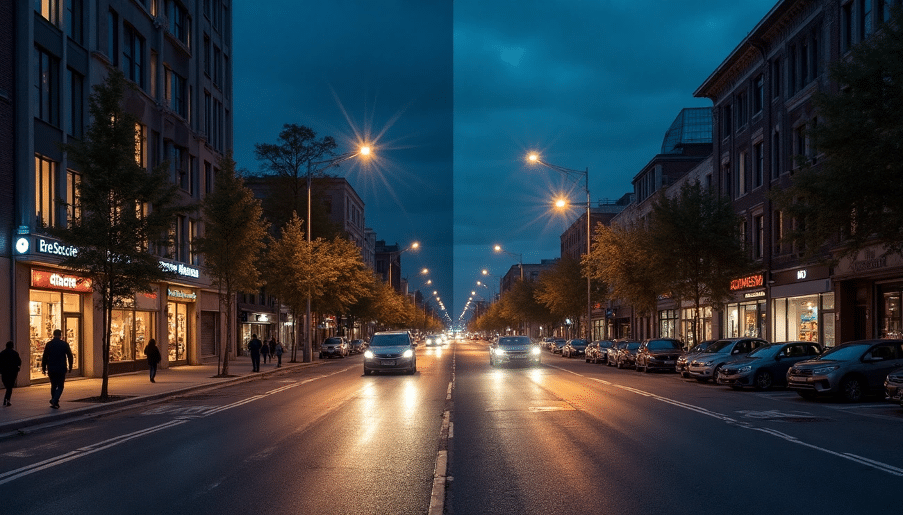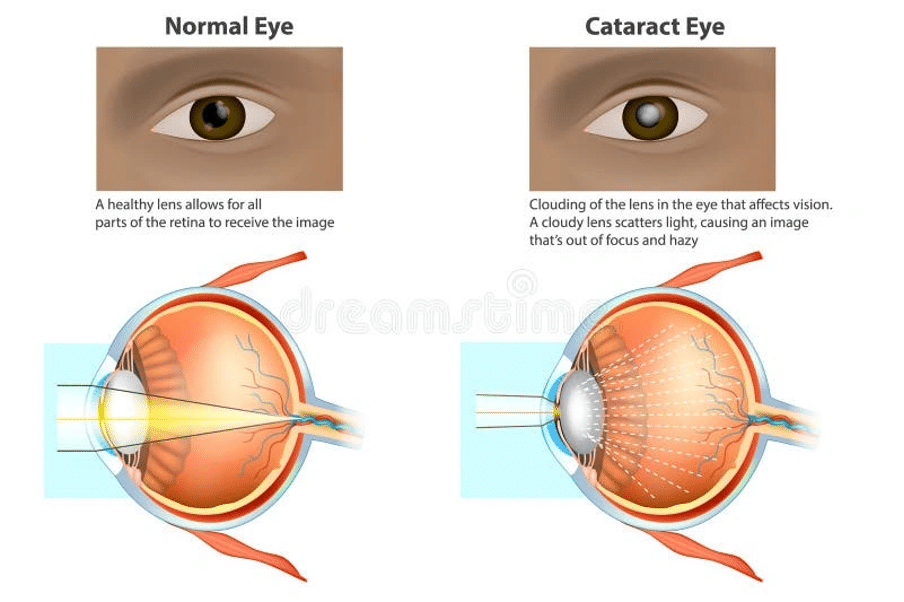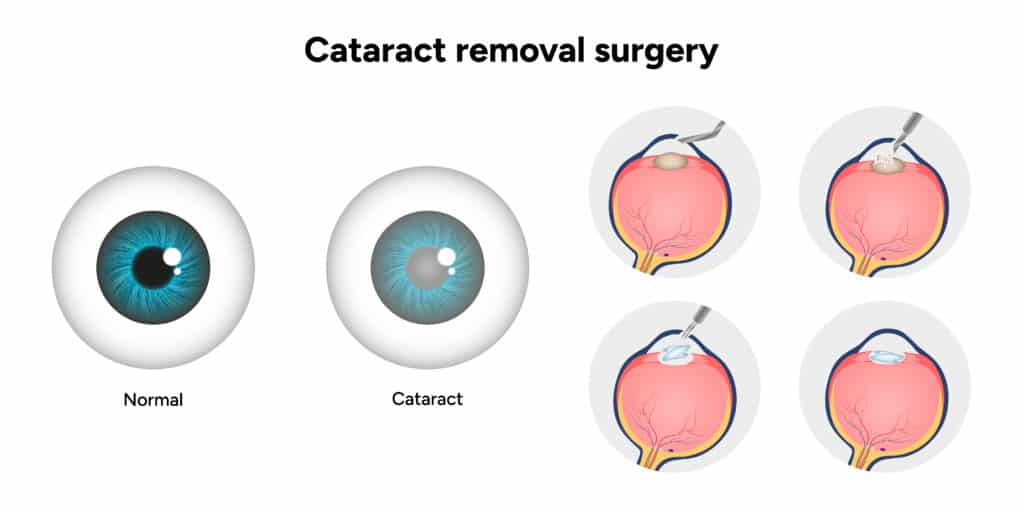Night blindness, or nyctalopia, makes it hard to see in dark or dim light. You might have this common vision condition if you can’t see well while driving after dark or find yourself bumping into things in poorly lit spaces. Some people develop this condition during childhood, while others notice it later in life.
The science behind night blindness lies in your retina’s rod cells. These light-sensitive cells make up 95% of your retinal photoreceptors and control how your irises adapt to different light levels. Several factors can trigger this condition – from inherited traits and retinal diseases to simple vitamin deficiencies. A lack of vitamin A stands out as a frequent cause.
Daily activities become quite challenging for people with night blindness, especially when they need to drive in darkness. Your night vision can get worse if you have cataracts – where your eye’s lens becomes cloudy from age or injury – or glaucoma that affects your light sensitivity and side vision. The good news is that treatments range from basic corrective lenses for nearsightedness to advanced surgical options.

What night blindness feels like in daily life
Night blindness isn’t just inconvenient – it changes how you see everything after the sun goes down. Your vision gets worse little by little, and everyday tasks become harder as darkness sets in.
Struggling to drive at night
Driving after dark usually shows the first signs of night blindness. You might catch yourself squinting to see better when other cars’ headlights come at you. Road signs look fuzzy, and spotting people walking on sidewalks becomes tough. Your brain can’t figure out how far things are either, which makes driving even riskier. Having trouble driving at night? Night blindness could be why.
This isn’t something to ignore – UK law says you must tell the DVLA if you have night blindness. You could face fines up to £1,000 if you don’t report it. You might even face legal trouble if you get into an accident because of it.
Difficulty adjusting from light to dark
Your eyes taking forever to adjust between bright and dark places is another red flag. Most people’s eyes need about 20 minutes to get used to low light. But if you have night blindness, it takes way longer or might not happen at all. Walking into dark movie theatres or restaurants becomes a real challenge. You might bump into furniture or trip after turning off lights at home. This puts you at much higher risk of getting hurt.
Seeing halos or glare around lights
Night blindness creates weird effects around lights. You’ll probably notice bright circles (halos) around streetlights and car headlights. These circles show up most in dim light and get really obvious at night. The glare and streaks around lights force you to squint just to see clearly. Light bends slightly as it passes around objects – that’s what causes this visual effect.

Feeling unsafe in dim environments
These symptoms add up to make you feel pretty vulnerable in low light. You can’t tell objects apart well when they’re similar colours. Night blindness can really mess with your life. It limits what you can do on your own and makes you anxious about going anywhere after dark. Simple things like eating out, watching movies, or hanging out with friends in the evening become real challenges. Many people just stop doing these things altogether.
Understanding the root causes of night blindness
Your eyes go through specific physical changes that affect how they process light in dark conditions when you have night blindness. Let’s get into why this challenging condition happens.
How cataracts reduce night vision
The clear lens in your eye gets cloudy when cataracts develop. This blocks light from passing through properly. Proteins in the lens start breaking down and clumping together around age 40. A cloudy lens scatters incoming light instead of focusing it on your retina. Light from headlights or streetlamps then spreads out, which creates those familiar halos around lights. Bright lights become uncomfortable as your eyes get more sensitive to glare. Most people first notice these night vision problems when cataracts start forming.

The link between vitamin A and retinal health
Vitamin A is a vital part of your vision, especially when you have to see in low light. Your retina needs this nutrient to make specific pigments that help it work right. Night blindness happens directly when you don’t have enough vitamin A because these pigments can’t form. While it’s rare in developed countries, vitamin A deficiency remains the top preventable cause of childhood blindness worldwide. It affects about 250,000-500,000 children each year. People with conditions like Crohn’s disease, celiac disease, and those who’ve had bariatric surgery can develop vitamin A deficiency even with good nutrition.
Inherited retinal diseases and their effect
Genetic issues cause several conditions that lead to night blindness. Children with retinitis pigmentosa (RP) first demonstrate night vision loss during childhood. Their peripheral vision narrows over time, creating a “tunnel vision” effect. Night blindness shows up as the first symptom in most cases, even though RP links to more than 60 different genes. Other genetic retinal diseases like Stargardt disease and cone-rod dystrophy also affect night vision, but they progress differently.
How diabetes and glaucoma contribute to symptoms
Diabetes and glaucoma can affect your night vision by a lot, each in its own way. High eye pressure damages the optic nerve in glaucoma, though some people get it with normal pressure too. This damage makes it hard to see contrast and peripheral vision, which becomes a big problem in dark places. Glaucoma also makes your eyes extra sensitive to light, so headlights and streetlights create intense glare. Diabetic retinopathy damages the blood vessels in your retina, which then affects night vision. You can’t reverse vision loss from glaucoma, so catching it early matters.
How night blindness is diagnosed and assessed
Night blindness diagnosis needs a full picture from eye care specialists. Accurate diagnosis is the foundation of treatment that works. The expert team at Precision Vision London provides advanced diagnostics and surgical solutions to restore your night vision.
Eye exams and retinal imaging
Your eye doctor starts with a detailed medical history and asks about your night vision problems and their progression. A complete eye examination has visual acuity testing, slit lamp examination, and retinal examination after pupil dilation. High-resolution retinal imaging shows details that standard examination can’t capture. Optical coherence tomography (OCT) maps the retina’s layers in 3D and measures their thickness. This advanced imaging detects subtle changes in the optic nerve. Patients with suspected blood vessel problems benefit from optical coherence tomography angiography (OCTA). It creates 3D maps of tiny blood vessels without injections or dyes.
Blood tests for vitamin A and glucose
Blood tests help identify why night blindness happens after eye examinations. Your doctor checks your vitamin A levels because its deficiency directly causes night blindness. Eye diseases that affect retinal health and vision can stem from abnormal glucose levels. These blood tests are a vital source of information about potential systemic problems linked to your symptoms.
Visual field and dark adaptation tests
Visual field testing checks both central and peripheral vision sensitivity—areas night blindness often affects. The test shows you light spots in sequence and records which ones you can see. Your responses help detect conditions like glaucoma or retinitis pigmentosa that harm peripheral vision.
Dark adaptation testing is a significant diagnostic tool that measures how well your eyes adjust to darkness. The test happens in a darkened room after bright light exposure and tracks threshold light sensitivity for 20-25 minutes. Results create a dark adaptation curve that shows patterns linked to different causes of night blindness. The Pelli-Robson contrast sensitivity chart serves as an additional tool in some clinics. It displays rows of letters in varying grey shades on a white background.
Surgical options and how they improve night vision
Surgical procedures are a great way to get remarkable solutions for people with night blindness. These procedures restore vision clarity and work best in low-light conditions where symptoms become most noticeable.
When cataract surgery is the right choice
Cataract surgery provides immediate and dramatic improvements for patients whose night blindness comes from cataracts. The procedure takes just 20-30 minutes to remove the cloudy natural lens and replace it with a clear artificial intraocular lens (IOL). Studies using driving simulators show that near misses and crashes dropped by as much as 48% after cataract surgery. Patients report fewer halos around lights and better night vision after surgery.

Benefits of refractive lens exchange
Refractive lens exchange (RLE) works exceptionally well for people with presbyopia or high prescriptions. The 15-30 minute procedure prevents future cataracts by replacing your natural lens with an artificial one. Many patients see better at night and notice improved contrast sensitivity. RLE delivers stable vision correction that lasts.
Using implantable contact lenses for long-term clarity
Implantable contact lenses (ICLs) give patients exceptional night vision benefits, especially those with high prescriptions. Clinical studies show ICLs help with activities like nighttime driving. These lenses can correct prescriptions up to +10 for long-sighted patients and -20 for short-sighted patients. Over the last several years, 99.78% of ICL patients were satisfied with their results.
Corneal cross linking for structural support
Corneal cross-linking helps patients with night blindness related to keratoconus by creating covalent cross-links in the stroma. The procedure stops keratoconus from getting worse and reduces vision problems by smoothing corneal irregularity. Patients see better in low light conditions after corneal cross-linking.
Why choose Precision Vision London for your care
Precision Vision London combines world-renowned surgical expertise with innovative technology to deliver exceptional results. Our detailed consultation creates a personalised treatment plan that fits your specific needs. Book your consultation today and see clearly day and night. Our experts have completed over 50,000 procedures in 30 years, and 95% of our patients achieve 20:20 vision or better.
Conclusion
Night blindness makes life harder for many people in the UK. It takes away their freedom and makes them worried about going out after dark. The reasons behind it range from cataracts to not having enough vitamin A in their body. This condition can really change someone’s life.
The good news is that modern surgery can help fix this problem. Cataract surgery works really well – it cuts down driving incidents by up to 48% and makes seeing at night much clearer. New options like refractive lens exchange and implantable contact lenses work great for people who have presbyopia or strong prescriptions. These treatments don’t just fix your eyes – they take away all the worry about not being able to see at night.
Getting the right diagnosis is key to fixing the problem. Eye doctors use complete eye exams, advanced retinal imaging, and special tests to find out exactly what’s causing your night vision problems. This full picture helps them pick the best treatment for you.
Precision Vision London brings together top surgical skills and advanced technology to change people’s lives. The numbers tell the story – 95% of patients get 20:20 vision or better after their treatment. Your path to better night vision starts with a personal consultation. Our specialists will create a treatment plan just for you.
Bad night vision can really mess up your daily life and freedom. But you don’t have to live with it forever. The right treatment can help you feel confident in dark places again. You’ll be able to drive after sunset and enjoy evening activities without worry. Book a consultation with Precision Vision London’s expert team today and take your first step toward better night vision.
Key Takeaways
Night blindness affects your ability to see clearly in dim environments, but modern surgical solutions can dramatically restore your vision and independence.
- Night blindness causes difficulty driving after dark, extended adjustment time between light environments, and halos around lights.
- Common causes include cataracts, vitamin A deficiency, inherited retinal diseases, diabetes, and glaucoma affecting rod cells.
- Comprehensive diagnosis involves eye exams, retinal imaging, blood tests, and specialised dark adaptation testing.
- Cataract surgery reduces driving incidents by up to 48% whilst dramatically improving night vision clarity.
- Advanced procedures like refractive lens exchange and implantable contact lenses offer long-term solutions for high prescriptions
Modern surgical interventions provide remarkable results, with 95% of patients achieving 20:20 vision or better. Don’t accept night vision limitations as permanent—expert consultation can determine the best treatment approach for your specific condition.
FAQs
Q1. What are the common symptoms of night blindness? Night blindness typically manifests as difficulty seeing in dim light, struggling to drive at night, experiencing halos around lights, and taking longer to adjust when moving between light and dark environments. These symptoms can significantly impact daily activities and safety after sunset.
Q2. What are the main causes of night blindness? Night blindness can be caused by various factors, including cataracts, vitamin A deficiency, inherited retinal diseases, diabetes, and glaucoma. These conditions affect the eye’s ability to process light effectively in low-light conditions, particularly impacting the rod cells in the retina.
Q3. How is night blindness diagnosed? Diagnosis of night blindness involves comprehensive eye examinations, including visual acuity tests, retinal imaging, and specialised assessments like visual field and dark adaptation tests. Blood tests may also be conducted to check for vitamin A levels and glucose abnormalities that could contribute to night vision problems.
Q4. Can surgery improve night vision? Yes, surgical interventions can significantly improve night vision for many patients. Cataract surgery, refractive lens exchange, and implantable contact lenses have shown remarkable results in restoring clarity and reducing night vision difficulties. The specific procedure recommended depends on the underlying cause of the night blindness.
Q5. How effective are surgical treatments for night blindness? Surgical treatments for night blindness can be highly effective. For instance, cataract surgery has been shown to reduce driving incidents by up to 48% while dramatically improving night vision clarity. Many patients report significant improvements in their ability to see clearly in low-light conditions following appropriate surgical interventions.
Authors & Reviewer
-
 Olivia: Author
Olivia: AuthorHi, I'm Olivia, a passionate writer specialising in eye care, vision health, and the latest advancements in optometry. I strive to craft informative and engaging articles that help readers make informed decisions about their eye health. With a keen eye for detail and a commitment to delivering accurate, research-backed content, I aim to educate and inspire through every piece I write.
-
 Dr. CT Pillai: Reviewer
Dr. CT Pillai: ReviewerDr. CT Pillai is a globally recognised ophthalmologist with over 30 years of experience, specialising in refractive surgery and general ophthalmology. Renowned for performing over 50,000 successful laser procedures.

